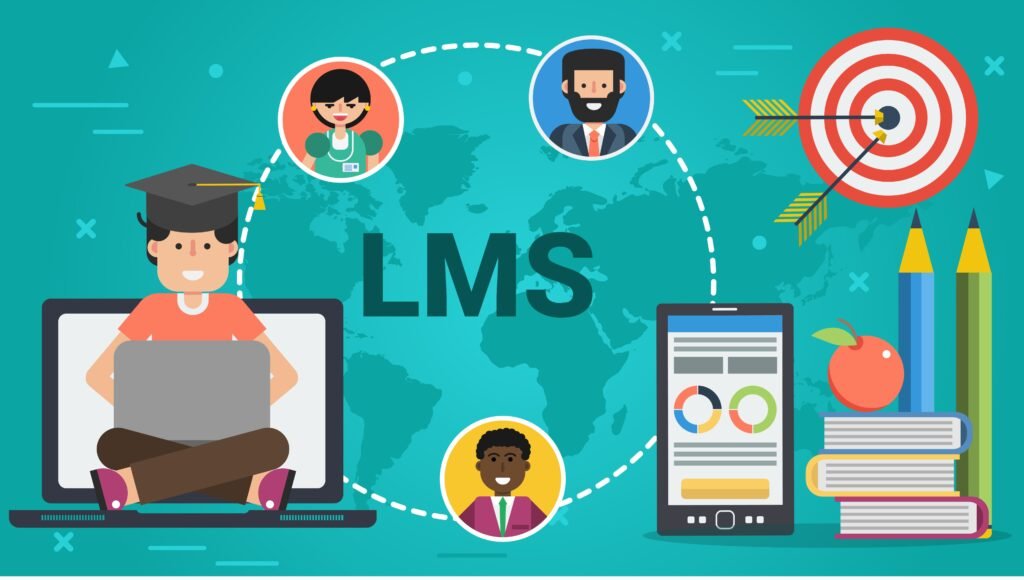The Role of Learning Management Systems in Modern Education
Technology has reshaped how we communicate, work, and learn. One of the most significant shifts in education has been the rise of Learning Management Systems (LMS). From schools to universities to professional training environments, LMS platforms are now central to how educational content is delivered and managed.
As an lms expert, I’ve seen firsthand how these systems can transform learning experiences, not by replacing teachers or traditional methods, but by enhancing them. When thoughtfully used, an LMS becomes more than just a tool—it becomes a bridge between knowledge and learners, no matter where they are.
What is a Learning Management System?
A Learning Management System is a digital platform used to organize, deliver, and track educational content. Think of it as a hub where students, instructors, and administrators can interact. From uploading study material and assigning quizzes to tracking progress and giving feedback, everything happens within one interface.
But what makes LMS truly powerful is not just its functionality. It’s the ability to make learning accessible, consistent, and adaptable.
Supporting Both Educators and Learners
One of the greatest strengths of an LMS is how it supports both sides of the learning equation.
For educators, it offers tools to create and organize lessons, assess performance, and interact with students. They no longer need to worry about losing papers, chasing after students for submissions, or struggling with manual grading. Everything is streamlined.
For learners, it creates a space where they can learn at their own pace, revisit content anytime, and receive timely feedback. Whether they are in a classroom or at home, their learning is not limited by location or time.
Encouraging Self-Paced and Flexible Learning
One-size-fits-all education rarely works. Everyone learns differently, at different speeds, and under different circumstances. LMS platforms help address this by offering flexibility.
Students can log in when they’re ready, review lessons multiple times, and learn in a way that fits their schedule. This is especially valuable for adult learners, part-time students, or anyone juggling multiple responsibilities.
Flexibility doesn’t mean lack of structure. An LMS allows educators to set clear timelines, create checkpoints, and maintain consistent communication—all while giving learners the freedom to engage in a way that works best for them.
Simplifying Administration and Evaluation
In any learning setup, there’s always an administrative side: enrollment, attendance, grades, certificates, and more. An LMS automates many of these tasks.
Instead of maintaining physical records or manually calculating grades, institutions can rely on the system to manage data accurately. This frees up time and reduces the chances of human error.
On the evaluation front, LMS platforms offer diverse tools for quizzes, assignments, peer assessments, and even gamified elements. This variety allows instructors to evaluate in more dynamic and engaging ways.
Fostering Collaboration and Communication
Learning is not a solo activity. Whether it’s peer-to-peer discussion, group work, or teacher-student interaction, communication is vital.
Most LMS platforms come with built-in tools like discussion forums, chat, announcements, and even video conferencing integration. These features allow for continuous engagement, even in remote or hybrid settings.
Students can ask questions, collaborate on projects, or get support without needing to be physically present in a classroom. Educators can check in regularly, share updates, and offer real-time feedback.
Supporting Diverse Content Formats
Different topics call for different teaching methods. A good LMS supports a variety of content formats—text, video, audio, interactive modules, and even virtual labs.
This allows instructors to be creative and cater to different learning styles. Visual learners benefit from diagrams and videos, while others might engage more with interactive quizzes or audio lectures.
By combining formats, educators can make learning more engaging and memorable.
Making Learning More Inclusive
Accessibility in education is essential. LMS platforms, when designed well, can help level the playing field for students with diverse needs.
Many systems come with features like screen reader compatibility, captioning for videos, adjustable font sizes, and customizable interfaces. This ensures that students with visual, hearing, or cognitive challenges can still participate fully.
In addition, students who live in rural areas or those who can’t attend regular classes due to health or family reasons still have access to quality education through online platforms.
Continuous Improvement Through Data
One often overlooked advantage of LMS platforms is the ability to gather data on learning behavior. Educators can see which modules are most effective, where students struggle, and how engagement levels vary.
This information isn’t just numbers—it’s a guide to improving course design and teaching strategies.
Instead of guessing what’s working, educators can rely on real data to adapt their methods, introduce new content, or offer additional support where needed.
Supporting Lifelong Learning
The concept of education being limited to school or college is outdated. In today’s world, learning is a continuous process—whether you’re updating skills for a job, switching careers, or exploring a new field.
LMS platforms make this possible by offering structured yet flexible learning opportunities outside traditional education settings. Many professionals now use LMS-based platforms for certifications, upskilling, or just personal growth.
The ability to learn anytime, anywhere, and at your own pace supports a culture of lifelong learning—and LMS is at the heart of it.
A recent study by the World Economic Forum highlights how digital platforms have expanded access to education across age groups, encouraging a shift toward lifelong learning worldwide.
Challenges and Considerations
While LMS platforms offer many advantages, they aren’t without challenges. Poorly designed systems can be confusing or frustrating. Technical issues, lack of training, or resistance to change can limit adoption.
It’s also important to remember that technology should support education, not overshadow it. The best results come when LMS tools are combined with thoughtful instructional design and active teacher involvement.
When choosing or implementing an LMS, institutions should focus on usability, accessibility, and training, not just features.
What the Future Looks Like
The role of LMS platforms will only grow in the coming years. As education continues to shift toward hybrid and online formats, the demand for seamless, user-friendly, and adaptable systems will increase.
Emerging technologies like AI and machine learning are already making their way into LMS platforms, offering personalized learning paths, real-time feedback, and smart content recommendations. This can help learners stay engaged and allow educators to intervene more effectively when needed.
But at its core, the value of an LMS remains the same: connecting people to knowledge in meaningful ways.







